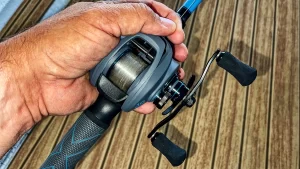Properly adjusting the drag on your spinning reel is crucial for successful fishing. The drag system controls how much resistance a fish feels when it pulls on your line, allowing you to tire out the fish without breaking the line. Whether you’re a beginner or an experienced angler, knowing how to set your drag correctly can make the difference between landing a trophy fish and losing it. Here’s a guide on how to adjust the drag on a spinning reel for optimal performance.
1. Understand the Importance of Drag
The drag on your spinning reel acts as a buffer to prevent the line from snapping when a fish pulls hard. Too tight, and the line could break; too loose, and the fish could escape. Properly adjusting the drag helps you manage the fight with the fish, letting the reel release line when needed while maintaining enough tension to tire the fish out.
2. Set the Drag Before Fishing
Always set the drag before you start fishing. Attach your lure or bait and hold the rod at a 45-degree angle. Pull the line directly from the reel and adjust the drag knob on top of the reel until you feel resistance. The drag should be tight enough that it gives way when you pull with force but not so loose that it unspools with little effort.

3. Adjust Based on Line Strength
As a general rule, set your drag to about one-third of the breaking strength of your fishing line. For instance, if you’re using a 15-pound test line, set the drag to release at around 5 pounds of pressure. This allows the drag system to absorb sudden surges from the fish without snapping the line.
4. Fine-Tuning During the Fight
During the fight with a fish, you may need to make small adjustments to the drag. If the fish is making strong runs, slightly loosen the drag to allow more line to play out. If the fish is tiring and you’re gaining control, tighten the drag to apply more pressure and bring it in. Being able to make quick adjustments is key to landing bigger fish.
5. Test and Practice
Before heading out, practice adjusting the drag and test it with different line weights. This will give you a better feel for how much resistance is needed for various types of fish. The more familiar you are with your reel’s drag system, the more confident you’ll be on the water.
In summary, properly adjusting the drag on your spinning reel is a fundamental skill that can significantly impact your fishing success. By following these steps and practicing regularly, you’ll be better equipped to handle whatever comes your way on the water.
Image: wired2fish





